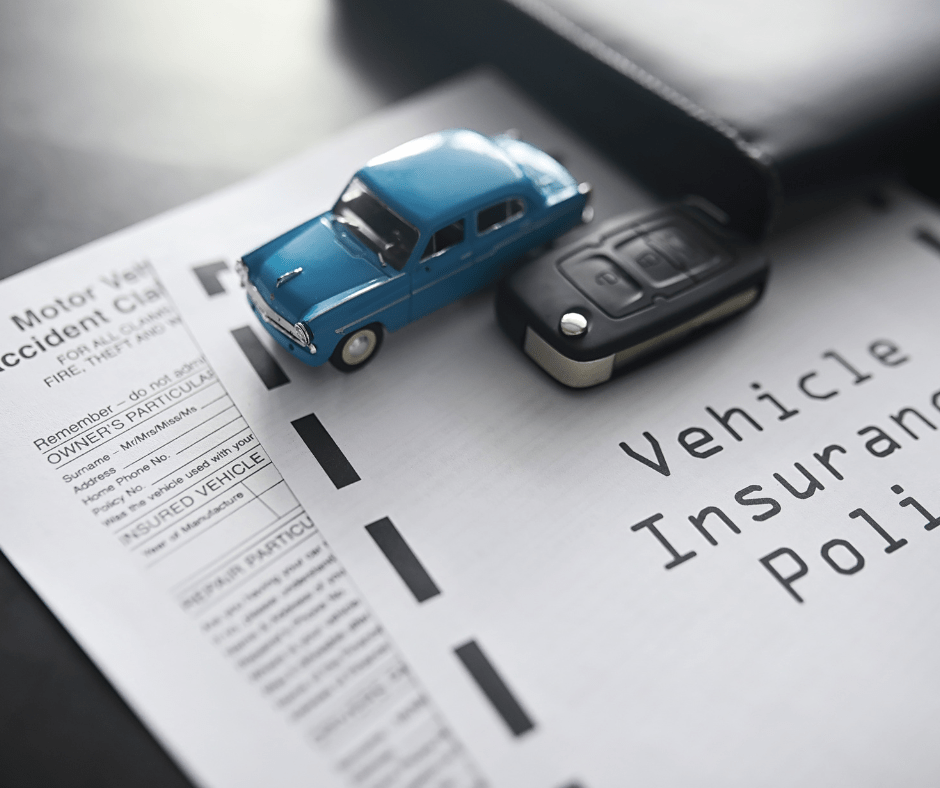 The Most Dangerous Intersections in New York
The Most Dangerous Intersections in New York
Buying car insurance, especially as a first-time driver, can feel daunting. Drivers face many different companies, policy options, and state coverage requirements needed to legally operate a motor vehicle in New York. Depending on your circumstances, you may need or want additional coverage options, like MedPay, rental reimbursement, or gap insurance.
It can be confusing to know where to start—or to determine whether you are getting coverage at a reasonable rate. At Greenspan & Greenspan, we get it. We put together this guide to help you understand your options and make informed decisions with ease and less stress.
What to Know Before You Buy: New York Car Insurance Essentials
Buying car insurance is not about picking the lowest-priced plan. To make sure you are fully protected and compliant with New York law, it helps to approach the process in three clear stages:
- Understanding what is legally required,
- Considering optional additional coverage, and
- Comparing policies to get the best value.
Below, we will walk through these three stages and explain what they involve.
Understanding New York Car Insurance Requirements
First, when purchasing car insurance, it is essential to understand New York’s minimum legal requirements. New York is a “no-fault” state, meaning your personal injury protection (PIP) insurance covers certain expenses up to the policy limits, regardless of who caused the crash.
The minimum PIP coverage for medical reimbursement in New York is $50,000 per person. You must purchase a policy with at least this amount of coverage, but you can always opt to purchase more.
You are also required to maintain liability coverage. This covers injuries and property damage you might cause to other people and vehicles in an accident. The minimum limits are as follows:
- $25,000 per person for bodily injury,
- $50,000 per accident for bodily injury to two or more people, and
- $10,000 per accident for property damage.
New York also requires drivers to carry uninsured motorist coverage if injured by a driver without auto insurance. The minimum required by law is $25,000 per person and $50,000 per accident.
Just like PIP coverage, these are minimums that you must maintain, but you can always purchase higher limits.
Exploring Optional Coverage for Enhanced Protection
While carrying the legally required minimum insurance is essential, expanding your policy can offer greater peace of mind. You might benefit from adding or increasing the following types of optional coverage:
- Supplemental uninsured/underinsured motorist (SUM) insurance—offers support in incidents involving drivers with limited insurance, as well as higher coverage for incidents with uninsured drivers;
- Collision insurance—helps pay for damage to your vehicle if you are involved in an accident with another car or a stationary object;
- Comprehensive insurance—covers non-collision-related incidents like theft, vandalism, severe weather, or animal damage;
- Medical Payments (MedPay)—provides coverage after PIP is exhausted for medical costs incurred by you and your passengers, no matter who caused the accident;
- Rental car reimbursement—helps cover the cost of a rental car while your vehicle is in the shop for repairs due to a covered incident; and
- Roadside assistance/towing coverage—offers support for services like towing, battery jumps, or flat tire changes if your car breaks down.
Many of these options are useful to have. However, they come at an additional cost.
Comparing Policies
Like any big purchase, shopping around and comparing prices and quotes among insurance companies is essential. You should always seek quotes from at least a few companies to see what you receive for the price. Look over each carefulforsee specific coverage limits, deductibles, applicable discounts, and more. It is also wise to look at the company’s overall customer satisfaction rating. You want a company with strong customer service ratings and low complaints.
Factors Influencing Your Rate in New York
Certain factors will affect your insurance rate. These include:
- Your driving record (i.e., a clean driving record will lead to lower rates);
- Geographic location;
- The make, model, and year of your car;
- Your age and gender; and
- Your credit score.
For example, if you are a young male driver under 25 and live in New York City, your rates are likely to be much higher than those of someone who is 65 and lives in a much less populated area.
Learn About Potential Discounts Before You Buy
Before committing to an auto insurance policy, explore the discounts available. Insurers often offer price reductions based on your driving habits, vehicle features, lifestyle, and even profession or education level.
Here are some common auto insurance discounts to look for:
- Bundling policies. You can save by combining your auto insurance with other policies, such as homeowners, renters, or motorcycle coverage, through the same provider.
- Safe driver discount. Drivers with a clean record free of accidents or traffic violations can be rewarded with lower rates.
- Low mileage discount. You may qualify for a lower rate if you drive less than the average number of miles per year, which is common for New York City residents.
- Vehicle safety features. Cars equipped with anti-lock brakes, airbags, and anti-theft systems often earn discounted premiums.
- Occupational discounts. Some insurers offer savings for military members, law enforcement, teachers, and other public service professionals.
- Driver education and good student discounts. Completing a certified driver training course or maintaining good grades (for student drivers) can result in reduced rates.
These discounts vary by insurer, so it is worth asking about them when getting quotes. Taking advantage of even a few of these can lead to meaningful savings on your policy.
Other Important Things to Remember
In addition to the above steps and tips, there are a few other important considerations when purchasing auto insurance.
- Always maintain continuous coverage. Do not let your policy lapse, as this can lead to license suspension, registration revocation, and fines and penalties.
- Look beyond price. While price is a valid concern and consideration, sometimes the lowest price also means you can end up with inadequate coverage and poor customer service.
- Do not hesitate to get help. If you feel overwhelmed and unsure of the coverage you should get, there are professional insurance agents who can further assist you. You can also contact the New York State Department of Financial Services for questions and assistance.
When you are ready to purchase a new policy, be prepared and have all your information about your license and vehicle organized and ready to go.
Talk to a New York Car Accident Attorney
Understanding your insurance options is just one part of protecting yourself after a crash. If you have been injured in a car accident, you may be entitled to compensation for your medical bills, lost income, and other losses. At Greenspan & Greenspan, we have been representing accident victims for over six decades. Contact us today to schedule a free consultation with one of our experienced attorneys to learn more about how we can help.






